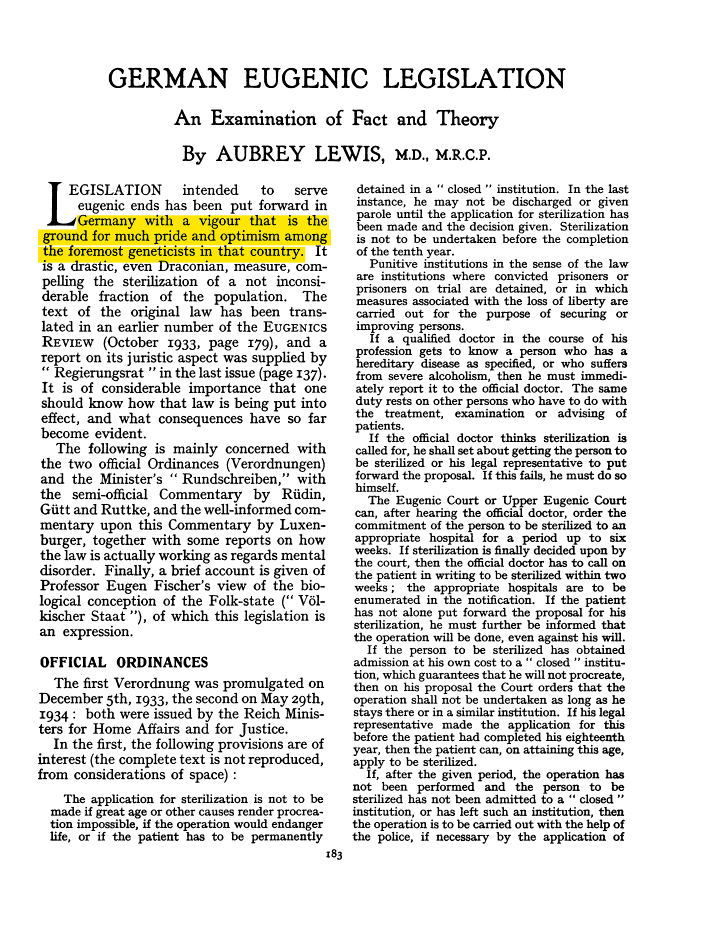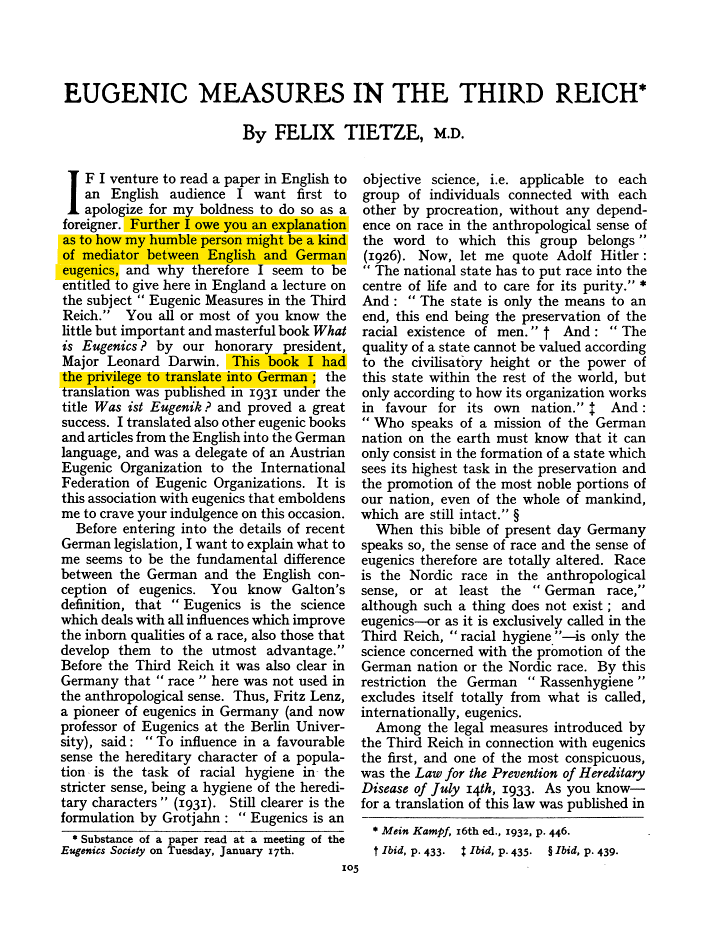Eugenics Undone
Eugenics and Nazi Germany

"German Eugenic Legislation" The Eugenics Review
After World War I, Germany rose as the major leader of the eugenics movement on an international stage, replacing America. Communication between post World War I Germany and America was almost constant. Americans were ready to help Germany pass copies of American eugenic legislation.
Eugenicists used eugenic publications to try to counteract a negative narrative about Nazi Germany in mainstream news. As a war raged and mainstream media denounced Germany’s genocide, they failed.
Prominent eugenicists received awards from the German eugenics program, which they touted to colleagues. Laughlin, who had long been involved with immigration policy, used his platform to bar Jewish refugees from entering America. After America joined the Allies, Nazi sympathizers found themselves losing the power they’d once coveted.

"Eugenic Measures in the Third Reich" The Eugenics Review
"The American eugenics movement that was at its height in the early 1900s is largely seen as having lost most of its influence after WWII due to its association with Nazis and the Holocaust... When the United States joined WWII, sterilizations of 'imbeciles' had to slow down regardless of how in agreement the eugenics community was about its importance. This decrease in sterilizations was not because America had immediately become disgusted with the practice being similar to that of Nazi Germany, but simply because many available surgeons that normally performed sterilizations were serving in the armed forces..." (Lieman).
Eugenics Fades to the Background
The Eugenics Record Office (ERO) did not survive eugenic’s rebranding to genetics. The resources collected by the organization were redistributed and the largest database of American genetics was lost.
"Although the ERO stopped functioning in 1939, America's eugenic laws did not. Tens of thousands of Americans continued to be forcibly sterilized, institutionalized, and legally prevented from marriage on the basis of racial and eugenic laws. During the 1940s, some 15,000 Americans were forcibly sterilized, almost a third of them in California. In the fifties, about ten thousand were sterilized. In the sixties, thousands more were sterilized. All told, an estimated 70,000 were eugenically sterilized in the first seven decades of the twentieth century..." (Black, 398).